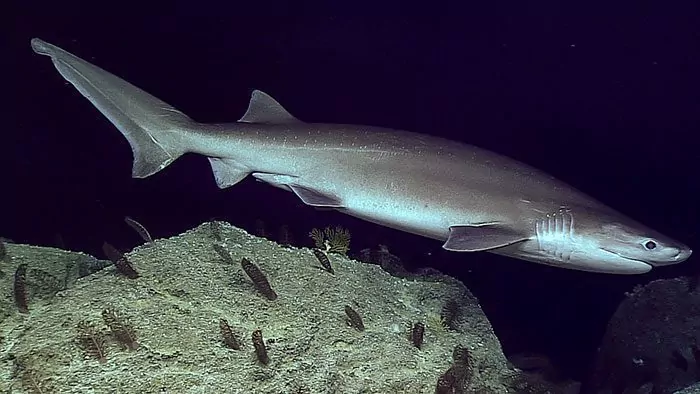Growing to no more than around 2m in length, the species is considerably smaller than the bluntnose six-gill (Hexanchus griseus) and bigeye six-gill (Hexanchus nakamurai), which can grow as long as 4.5m.
Most shark species have five gills but, apart from the additional organ, six-gills also have saw-like lower teeth.
Also read: 4 divers enjoy rare six-gill shark encounter
Previous confusion and misidentification of six-gill sharks, particularly the bigeye, has been dispelled by the study of 1310 base pairs of two mitochondrial genes, say the authors of a study published in Marine Biodiversity.
The scientists, from Florida Institute of Technology, MarAlliance (Belize), Florida State University Coastal & Marine Laboratory and the US National Marine Fisheries Service, say that although Atlantic six-gills look like those found in the Pacific (around Japan) and the Indian Ocean (Reunion and Madagascar), they are genetically as distinct as the bluntnose six-gill is from the bigeye.

